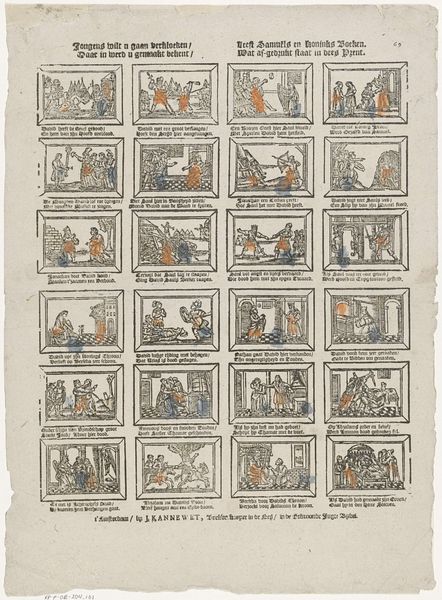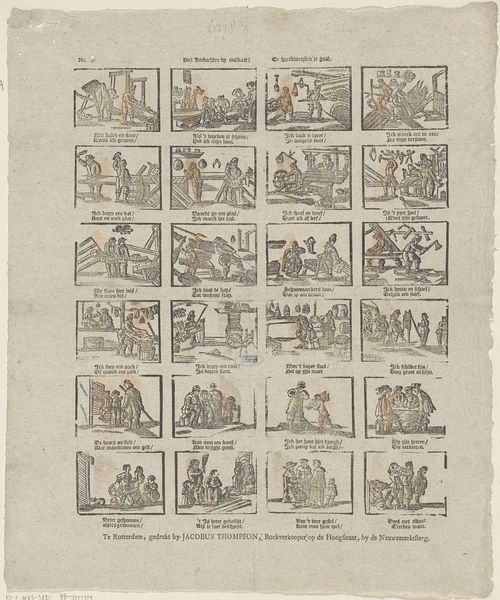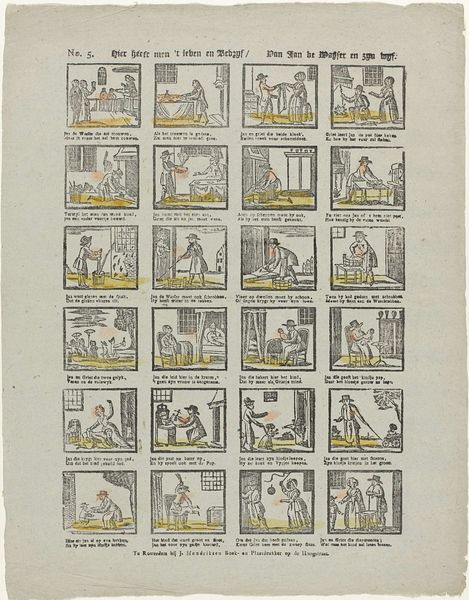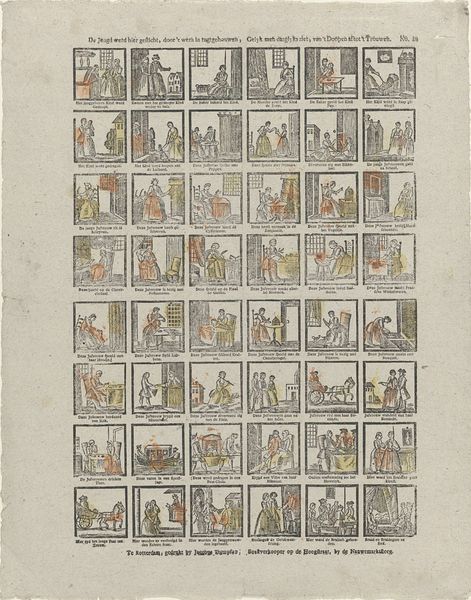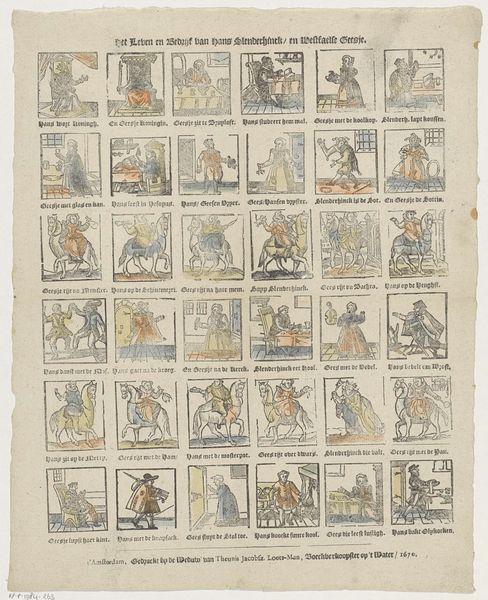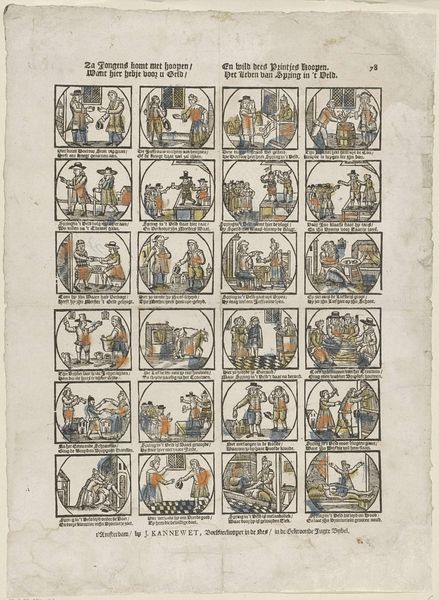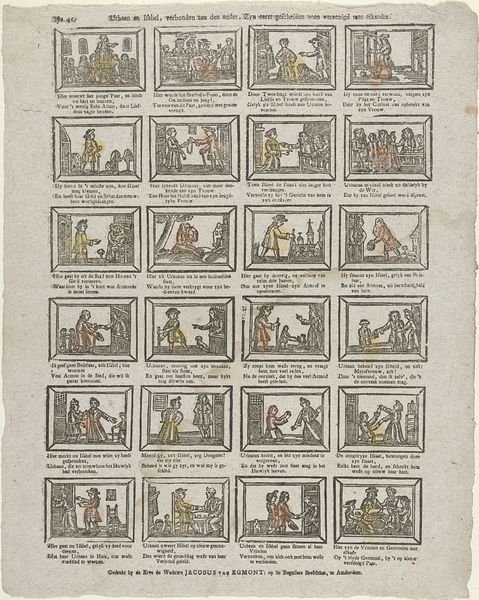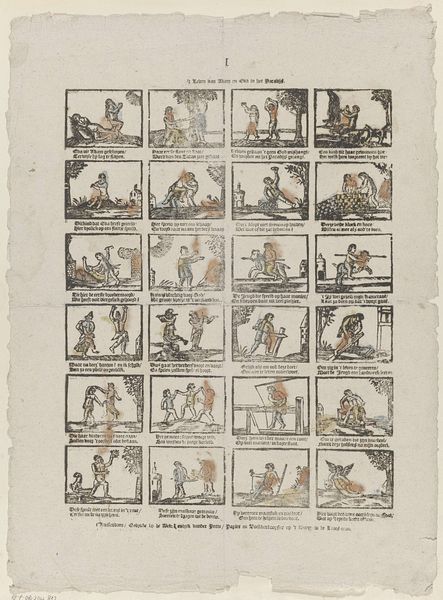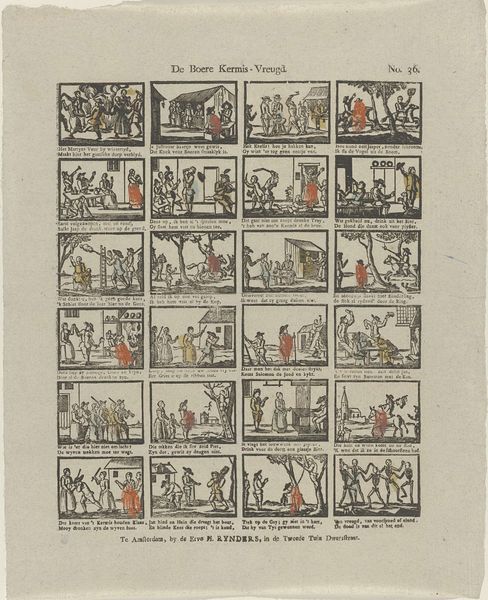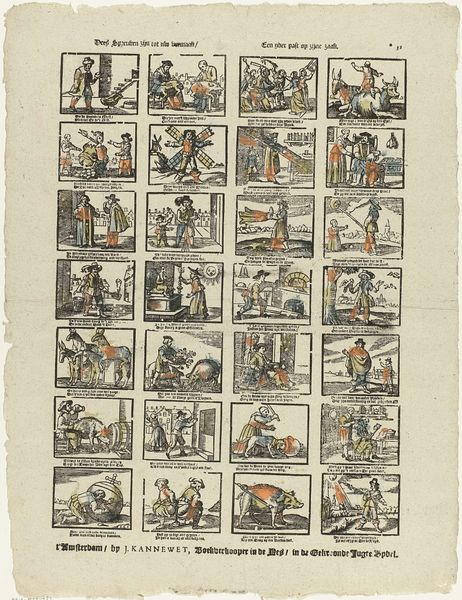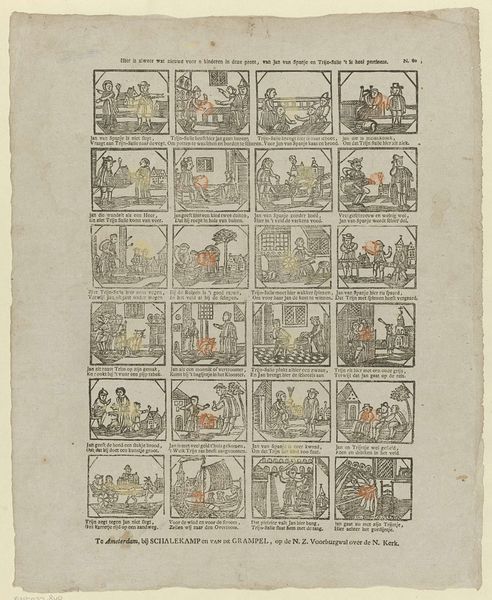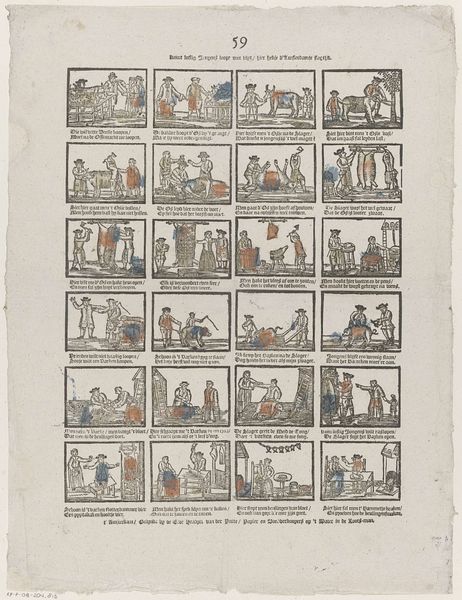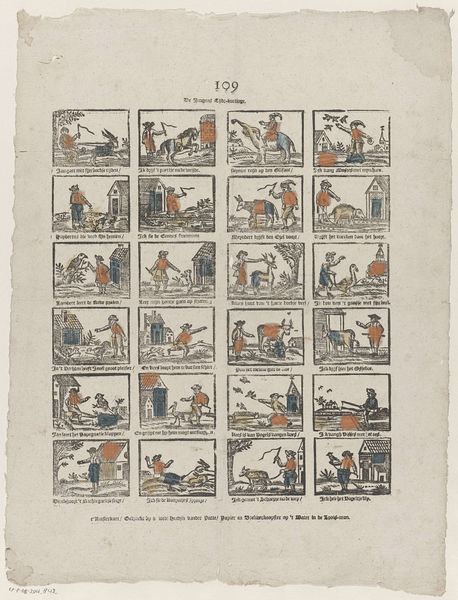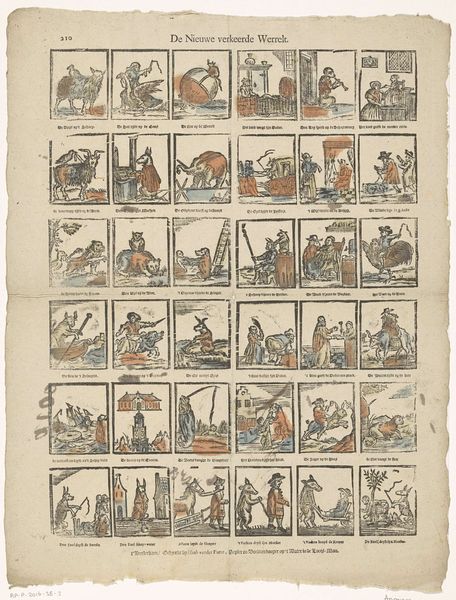
print, etching
#
narrative-art
#
dutch-golden-age
# print
#
etching
#
genre-painting
Dimensions: height 414 mm, width 306 mm
Copyright: Rijks Museum: Open Domain
Curator: This print, "De nieuwe vermaakelijke Amsterdamze slagt-tijd" by Johannes Kannewet, likely from the mid-18th century, strikes me as a fascinating document of its time. It's a collection of these little scenes. Editor: Right, it almost looks like a cartoon strip! So, what's being "slagt" here? The title feels very…violent? How should we interpret this work? Curator: Indeed. "Slagt-tijd" here hints at a slaughtering or butchering of social norms, perhaps through satire. Look closely: each frame stages an aspect of Amsterdam life – markets, domestic scenes – maybe through a critical lens. What do you notice about who seems to hold power in these images? Editor: Some seem to depict everyday life but there are also scenes of injustice like the corporal punishments at the bottom. Do these violent scenes make a statement about power and society at the time? Curator: Exactly. And think about the context: the Dutch Golden Age, a period of immense wealth, but also stark inequality and rigid social structures. This print seems to offer a social commentary, maybe even a critique of those power dynamics through satire. The "slaughtering" is metaphorical – a takedown of societal conventions. This print is inviting the people to open their eyes to corruption, almost asking for resistance to the conventional expectations within Dutch society. What is not perfect about the Dutch golden age here? Editor: That's really interesting, framing it as a critique of Golden Age society. I had initially seen just small everyday life moments of 18th-century Amsterdam. I guess I missed the underlying tone. Curator: That is the intention. When observing a new artwork, use your cultural background, knowledge, and emotions to truly unpack the statement the work tries to get across. Consider how those perspectives would apply across social movements of that time!
Comments
No comments
Be the first to comment and join the conversation on the ultimate creative platform.
